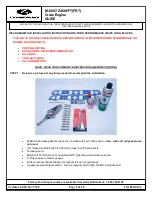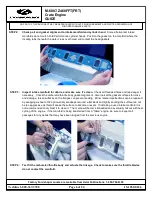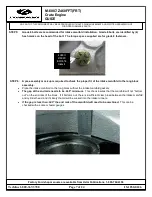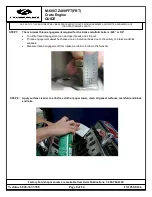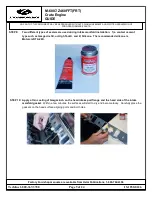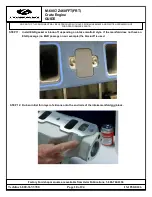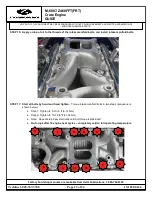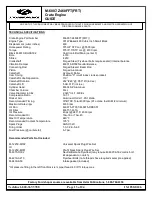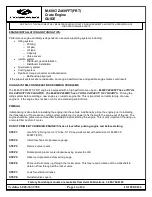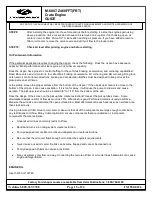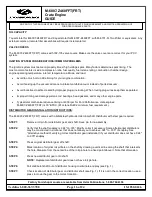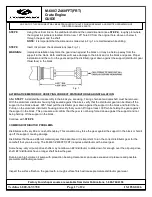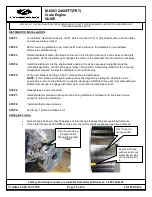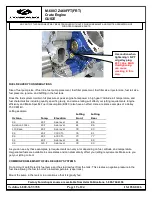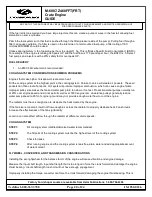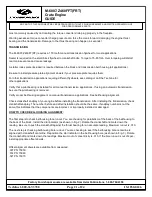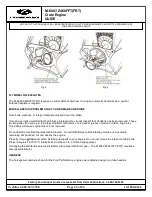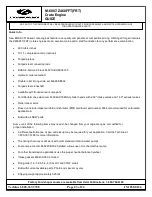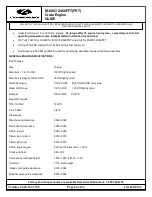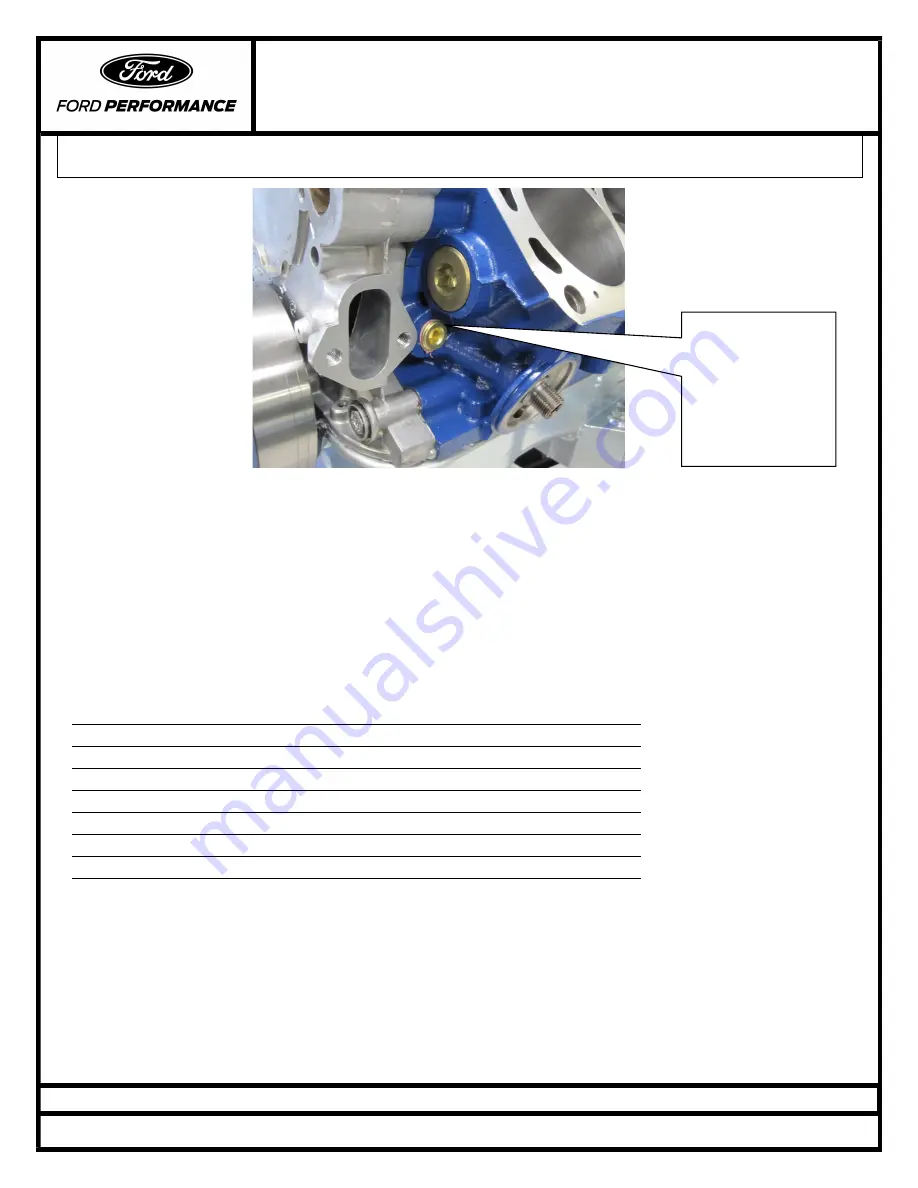
M-6007-Z460FFT(FRT)
Crate Engine
GUIDE
NO PART OF THIS DOCUMENT MAY BE REPRODUCED WITHOUT PRIOR AGREEMENT AND WRITTEN PERMISSION OF
FORD PERFORMANCE PARTS.
Techline 1-800-367-3788
Page 19 of 24
IS-1850-0636
Factory Ford shop manuals are available from Helm Publications, 1-800-782-4356
FUEL DELIVERY CONSIDERATIONS
Size of fuel pump, size of fuel line, fuel pump placement, fuel filter placement, fuel filter size, injector size, fuel rail size,
fuel pressure, jet size, and baffling in the fuel tank.
Does the fuel system maintain full pressure at peak engine horsepower in high gear? Altitude, air temperature, and
fuel characteristics including quality, specific gravity, and octane rating, will affect your jetting requirements. Engine
efficiency and Brake Specific Fuel Consumption (BSFC) also have an effect. Here are some examples of a Holley
750 CFM 4V.
Jetting example:
Jetting
Jetting
Octane
Temp.
Elevation
Front
Rear
94
80 F
Sea level
81
86
Aviation 100LL
80 F
Sea level
81
84
110 Race
80 F
Sea level
78
83
94
80 F
3000 ft.
76
81
94
80 F
6000 ft.
73
77
94
40 F
Sea level
84
89
94
120 F
Sea level
78
83
As you can see by these examples, jet requirements can vary a lot depending on fuel, altitude, and temperature.
Oxygenated fuels are available in some states and can dramatically affect your jetting requirements. Make sure you
get your jetting correct.
COMMON PROBLEMS WITH FUEL DELIVERY SYSTEMS
Do not mount an EFI electric fuel pump so it has to draw fuel from the tank. This creates a negative pressure in the
fuel line allowing the fuel to boil at a lower temperature (vapor lock).
Mount the pump in the tank or in a location so that it is gravity fed.
Use caution when
tightening ½ NPT
oil galley plug
.
40 Ft. Lbs. MAX.
Overtighening
can cause
cracking in this
area
.

